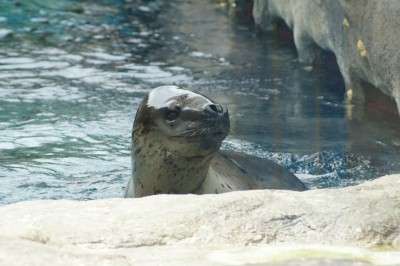Biologists have shown how an advanced set of teeth give Antarctic leopard seals the biological tools to feast on prey of all sizes, from penguins to tiny krill.
The seals are infamous for their 'grip and tear' feeding tactics where they shake penguins and larger prey while holding them between their long front teeth. Now, researchers from Monash University and Museum Victoria have documented for the first time, in Polar Biology, how they use side teeth to sieve five centimetre-long krill from seawater.
David Hocking, a PhD student in the Monash School of Biological Sciences who has been studying the marine predators, said exactly how seals ingested the krill had been a puzzle.
"The classic filter feeders of the ocean are the mysticete whales, such as the humpback and blue whales, that use specialised baleen as a filter to sieve for krill. But leopard seals don't have baleen," Mr Hocking said.
To work out how leopard seals, which can reach up to 500 kg in the wild, are able to feed on such tiny prey, the team performed feeding trials with the species at Taronga Zoo in Sydney.
The researchers showed that the seals generate suction with their tongues to draw prey into their mouths. The excess water is then forced out of the corners of the mouth while the food is retained behind a sieve created by the cheek teeth.
Dr Alistair Evans, also of the Monash School of Biological Sciences, said the seals' ability to use their cheek teeth as a sieve had been suspected, but never observed.
"These seals use their front teeth - canines and incisors - to capture and kill large prey. But their long multi-cusped cheek teeth act as a sieve, similar to what we see in filter-feeding whales," Dr Evans said.
Museum Victoria's Dr Erich Fitzgerald said the seals were supremely well adapted to their aquatic environment.
"What we are seeing here is a large predator that can eat penguins at one time of year, and then switch to krill when there's no big prey around," Dr Fitzgerald said.
The seals' ability to switch diets depending on seasonal abundances of prey may be key to their success in the harsh Antarctic environment.
"These seals are one of last truly abundant large mammalian predators remaining in the wild, with numbers possibly as high as 100,000 around Antarctica," Mr Hocking said.
"However, their dependence on krill may also be a weakness due to krill's susceptibility to climate change and potential as a commercial fishing target. In the future, it's likely these amazing predators will be at great risk, along with other iconic Antarctic fauna."
Provided by Monash University




















